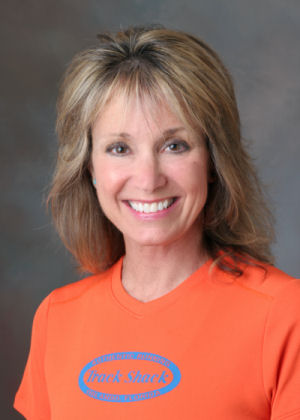
By Susan F. Paul, M, TSF Training Program Director
What if you could improve your PR without running HARDER or running MORE miles? You might just be able to do exactly that by simply incorporating regular stretching into your running routine.
The American College of Sports Medicine lists the five major components of fitness as aerobic fitness, muscular strength, muscular endurance, percentage of body fat, and muscular flexibility. These five fitness components are easily measured through a series of tests. Most runners are fairly fit and score very well on all of these assessments, except muscular flexibility, making flexibility the forgotten fitness component.
Aerobic fitness is measured by our cardio-respiratory (heart and lungs) response during exercise and is usually assessed while on a treadmill or a stationary bike. Muscular strength and endurance are assessed by the number of push-ups and sit-ups we can perform in one minute. Percent of body fat is estimated with calipers that measure the amount of subcutaneous fat on specific body sites. And, last but not least, muscular flexibility is assessed by performing the Sit-and-Reach test. For this test sit down on the ground, extend your legs straight out in front of you and with your knees straight and your feet flexed. Now, lean forward and reach past your toes. Can you reach your toes? Can you reach beyond your toes? How far?
Top 5 Reasons to Stretch
• Maintain and improve joint range of motion.
• Reduce injury risk.
• Improve running efficiency by developing better posture and body mechanics.
• Improve recovery time by boosting circulation.
• Improve performance.
Why do runners score so low on flexibility? The answer is simple: repetitive use. Running uses the same muscles– day after day, mile after mile, in the very same movement pattern, over and over and over. Repetitive use means the joints and the surrounding muscles only perform within this specific range of motion. This limited range of motion tends to reduce flexibility and restrict normal joint range of motion. To counteract the effect of repetitive use, the soft tissues that surround a joint– muscles, tendons, fascia, and connective tissue– need to lengthen or stretch on a regular basis in order to maintain the normal range of motion for that joint. A reduced range of motion limits stride length and power thus diminishing performance. Reduced flexibility also increases injury risk because muscles do not absorb shock or handle changes in motion well.
Commit to make stretching a part your daily ritual. Stretching should rank right up there with brushing your teeth and bathing. Stretch your muscles when they are warm, which means stretch AFTER your run, not before it. Do not use stretching as yourwarm-up. The primary purpose of a warm-up is to raise the temperature within the body. This increase in temperature softens connective tissues and infuses muscles with blood, oxygen, and nutrients in preparation for exercise. The best warm-up is one that simulates the intended exercise activity at a low intensity. For example, the best warm-up for running is walking or jogging at a very slow pace until you feel your body temperature increase.
Top 5 Muscles to Stretch
• Calf Muscles The gastrocnemius and soleus muscles are located on the back of your lower leg. Calf muscles never get a break, they work all the time whether standing, walking or running. Regular stretching will help reduce muscle cramping.
• Quadriceps The muscles on the front of the thigh are a group of 4 individual muscles known collectively as the “quadriceps”. They are responsible for hip flexion and knee extension. Every time you pick up your leg to take a step these muscles are involved.
• Hip Flexors These are really two muscles, the iliacus and the psoas, that together form the hip flexors. They run from the lower back to the inside of the thigh, passing just inside the hip bone. They contract every time you pick up your thigh. When they become tight, they can contribute to low back pain.
• Hamstrings The muscles located on the back of the thigh are a group of 3 individual muscles called the hamstrings. They are responsible for hip extension and knee flexion, a large part of the running motion.
• Back The erector spinae muscle group runs the entire length of the back, from the neck to the top of the pelvis. The quadratus lumborum is a set of muscles that attach to the top of the pelvis, the lumbar vertebrae, and the bottom rib on either side of the spine. These muscles work to maintain our posture, stabilize the pelvis, and absorb shock while we run. They become very tight with mileage and speed.
Stretching improves circulation; therefore, by stretching AFTER your runs you will immediately begin promoting the recovery process. Post-run stretching helps remove metabolic waste by-products, reduces muscle soreness, decreases muscle cramping and post-run stiffness. An alternative stretching time can also be at the end of the day, before bedtime. Take a warm shower or bath to warm up your muscles and bring your body temperature up. Then lie on the floor and stretch while you watch TV or listen to music and relax.
For more training tips and information on available training programs run to TrackShack.com.







